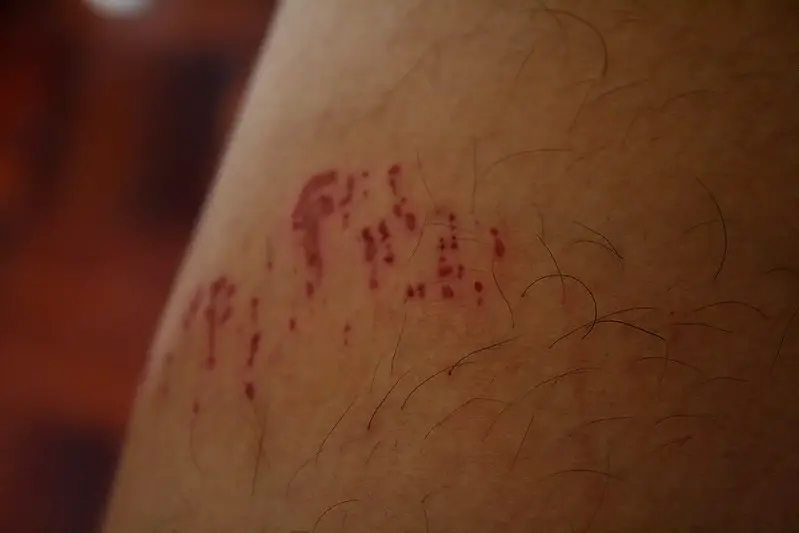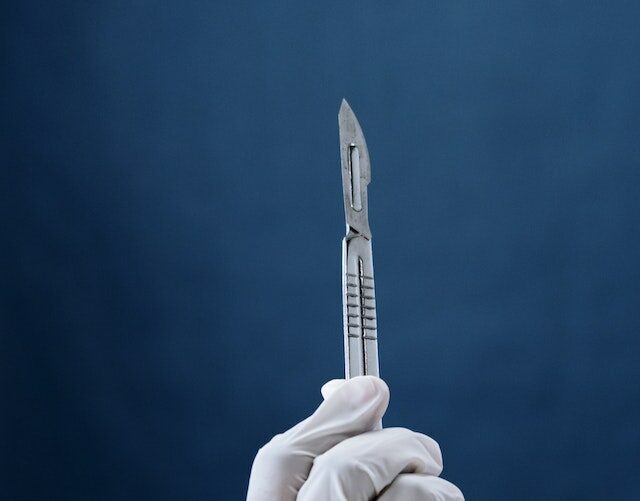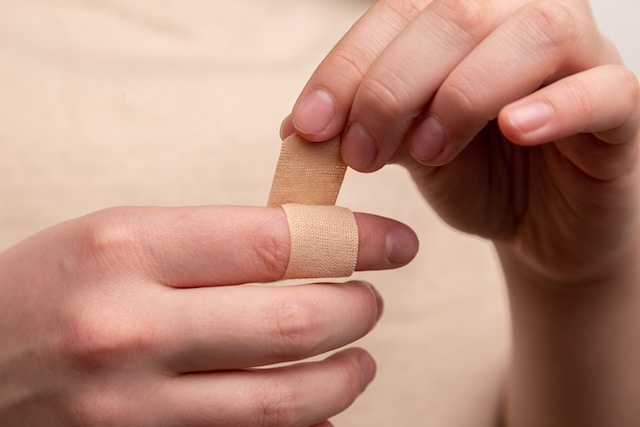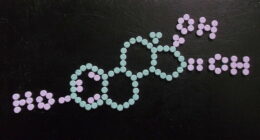Laceration and incision are both types of wounds. Lacerations are caused by blunt force, while incisions are caused by sharp objects. Lacerations and incisions both can be serious, as they can involve damage to muscles, bones, and organs.
Laceration
(Photo by Mohd Fazlin Mohd Effendy Ooi on Flickr )

A laceration is a type of wound that occurs when the skin and/or underlying tissues are torn or cut open. Lacerations can range in severity from minor cuts that only affect the surface of the skin to deep wounds that damage muscles, tendons, and other tissues.
Lacerations can be caused by many things, including accidents, falls, and sharp objects like knives or broken glass. Symptoms of a laceration may include pain, bleeding, swelling, and redness around the wound. In some cases, a laceration may also cause numbness or tingling around the affected area.
Treatment for a laceration depends on the severity of the injury. Minor lacerations can often be treated with first aid at home, such as cleaning the wound and applying a sterile bandage or dressing. More severe lacerations may require medical attention, including stitches or surgery to repair damaged tissues.
Incision
(Photo by cottonbro studio )

Incision wounds are made with a sharp object, such as a knife or razor. The edges of the wound are usually clean and straight, and the wound may not bleed as much as a laceration. Incisions can also be deep or shallow, but they typically heal without stitches.
An incision is a type of cut made with a sharp instrument, such as a scalpel, during a surgical or medical procedure. Incisions can be made on various parts of the body, depending on the type of procedure being performed.
Incisions are usually made intentionally and are usually performed under sterile conditions. The purpose of an incision is to provide access to internal tissues or organs for surgical or medical treatment, such as removing a tumor, repairing a damaged organ or blood vessel, or performing a biopsy.
After an incision is made, the surrounding tissues are carefully separated to gain access to the target area. The incision is then closed using various techniques, such as sutures, staples, or adhesive strips, to help the wound heal and prevent infection.
Incisions are typically performed under local or general anesthesia to minimize pain and discomfort during the procedure. After the procedure, the patient may experience some pain, swelling, and bruising around the incision site, but these symptoms usually improve over time as the wound heals. Proper care of the incision site, including keeping it clean and dry, can help prevent infection and promote healing.
Laceration Vs Incision – Key differences
The key differences between a laceration and an incision are:
Cause: A laceration is a type of wound that is caused by blunt force trauma, such as a fall or impact, or by a sharp object tearing or cutting through the skin and underlying tissues. An incision, on the other hand, is a deliberate cut made with a surgical instrument, such as a scalpel, during a surgical or medical procedure.
Severity: Lacerations can range in severity from minor cuts to deep wounds that damage muscles, tendons, and other tissues. In contrast, incisions are typically performed under controlled conditions with a specific purpose and are generally made to access deeper tissues or organs for surgical or medical treatment.
Treatment: Treatment for lacerations depends on the severity of the injury and can range from basic first aid to medical intervention, such as stitches or surgery. Incisions are performed under sterile conditions and are typically closed using sutures, staples, or adhesive strips to promote healing and prevent infection.
Healing Time: The healing time for lacerations and incisions can vary depending on the severity of the injury and the location of the wound. Lacerations may take longer to heal if they are deep or involve damage to underlying tissues. Incisions may also take longer to heal if they are in a location that is under tension or pressure.
The key differences between lacerations and incisions relate to their cause, severity, and treatment. Lacerations are typically accidental wounds caused by blunt force trauma or sharp objects, while incisions are intentional cuts made during surgical or medical procedures.
What is an abrasion?
An abrasion is a type of injury that occurs when the skin is scraped or rubbed against a rough surface, causing the outermost layer of skin to be removed. This can be caused by a variety of things, such as falling on pavement or getting a rug burn. Abrasions are typically painful and can be accompanied by redness, swelling, and bleeding. They are generally not serious and can be treated at home with cleaning, applying a topical ointment, and covering the area with a sterile bandage to protect it from further damage and infection.
How do you identify a laceration?
Lacerations are usually caused by blunt trauma, such as a fall or a blow to the body, and are characterized by irregular, ragged edges. Incisions, on the other hand, are clean cuts made with a sharp object, like a knife or scissors. To identify a laceration, look for a wound with ragged, uneven edges.
What are the 7 types of wounds?
Abrasions: These are superficial wounds that occur when the skin is scraped or rubbed against a rough surface. They usually result in minor bleeding and do not penetrate deeply into the skin.
Incisions: These are wounds caused by a sharp object such as a knife, scissors or glass. They are usually clean and straight and can penetrate deeply into the skin and underlying tissues.
Lacerations: These are irregularly shaped wounds caused by a blunt force trauma, such as being hit by a heavy object. They can be deep and may have jagged edges, making them difficult to repair.
Punctures: These wounds are caused by a pointed object, such as a nail, needle or animal bite. They can be deep and may cause damage to internal organs or structures.
Avulsions: These wounds occur when a portion of the skin or tissue is torn away, often as a result of an accident or injury. They can be extensive and may require surgical intervention.
Burns: These are injuries caused by heat, chemicals, electricity, or radiation. They can be superficial or deep and can result in significant tissue damage.
Pressure Ulcers: These are wounds that develop when there is sustained pressure on a particular area of skin, causing damage to the underlying tissue. They are commonly known as bedsores and are often seen in individuals who are bedridden or have limited mobility.
How do doctors treat lacerations?
The treatment of lacerations depends on the severity of the wound. Here are the steps that doctors usually follow when treating lacerations:
- Cleaning the wound: The first step is to clean the wound thoroughly to remove any dirt, debris or bacteria that may be present. This is usually done by irrigating the wound with a sterile saline solution.
- Assessing the extent of the wound: The doctor will examine the wound to determine how deep it is and whether it involves any underlying structures such as muscles, tendons or nerves.
- Stopping the bleeding: If the laceration is bleeding heavily, the doctor will apply pressure to the wound to stop the bleeding. In some cases, stitches may be needed to close the wound.
- Administering local anesthesia: If the wound is painful, the doctor may use a local anesthetic to numb the area before suturing or stapling the wound.
- Closing the wound: Depending on the size and location of the wound, the doctor may use stitches, staples, or adhesive strips to close the wound.
- Dressing the wound: After the wound has been closed, the doctor will cover it with a sterile dressing to protect it from infection and promote healing.
- Providing aftercare instructions: The doctor will provide instructions on how to care for the wound at home, including how to keep it clean, change the dressing, and watch for signs of infection.
In some cases, the doctor may also prescribe antibiotics to prevent infection or pain medication to manage discomfort.
How do doctors treat Incisions?
The treatment for incisions depends on the severity and location of the injury. Here are some general guidelines:
- Keep the area clean: The first step in treating an incision is to keep the area clean to prevent infection. The wound can be washed gently with soap and water or with an antiseptic solution.
- Cover the wound: The wound should be covered with a sterile bandage or dressing. This will help to keep the area clean and protect it from further injury.
- Apply pressure: If the incision is bleeding, apply pressure to the area with a clean cloth or bandage. Elevating the affected area above the level of the heart can also help to reduce bleeding.
- Apply ice: If there is swelling or bruising, applying an ice pack to the affected area can help to reduce inflammation and discomfort.
- Take pain medication: Over-the-counter pain medication can be taken to help manage pain associated with the incision.
Follow up with a healthcare provider: If the incision is deep or large, or if there are signs of infection such as redness, swelling, or discharge, it’s important to see a healthcare provider. They may recommend antibiotics or other treatments depending on the severity of the injury.
Featured Image By – Photo by Diana Polekhina on Unsplash








